Discover this simple golf hack that fixes your golf setup instantly! Learn the hidden cap trick that eliminates the most common setup error and improves your swing in seconds.
Watch more ‘Tour Quality Ball Striking’ HERE – https://rob-cheney.mykajabi.com/joinus
Access Exclusive and early content Here – https://www.youtube.com/channel/UC14EwLYUwQ_hZJG09z8O2kw/join
iRangeSports Tripod – https://irangesports.com/?ref=sqkrivhf (use code ‘ROBCHENEYGOLF’ for 10% off)
0:00 🏌️ The most prescribed setup advice in golf instruction
0:28 📏 Why keeping your back straight and chin up is wrong
1:24 💡 The correct head and neck position for better tilting
1:55 🧢 The hidden baseball cap hack revealed
3:24 ✅ Checkpoint #1: P1 setup position – face covered by cap bill
4:04 ✅ Checkpoint #2: P4 top of backswing – maintain face coverage
5:08 ✅ Checkpoint #3: P9 follow through – ensure continued tilt
7:19 🏋️ Head on the wall drill for better pivot training
10:29 🎯 Simple 2-second adjustment for immediate improvement
This video exposes the most common golf setup mistake that instructors perpetually recommend and reveals a simple golf hack using your baseball cap to fix it instantly. You’ll learn why keeping your spine straight and chin up actually hurts your swing, and discover the correct head position that encourages proper shoulder tilt throughout your entire swing motion.
What you’ll learn:
-The problematic golf setup advice that 99% of golfers follow incorrectly
-How to use your cap bill as a visual checkpoint for proper head position
-The three critical swing positions where your face should stay covered
-Why tucking your chin creates better shoulder tilt and contact
-The head-on-wall drill to train consistent spine angle and pivot
-How proper head position improves distance, accuracy, and shot dispersion
-A 2-second adjustment you can make on your very next shot
-Why looking at the ball through central vision is crucial for solid contact
#golfsetup #golfhack #golftips #golfswing #golfinstruction #ballstriking #golfdrills #improveyourgolf
🌎 ***Check out my website www.robcheneygolf.com ***
📲 Online Lessons via SKILLEST app – https://skillest.com/robcheneygolf
https://www.instagram.com/robcheneygolf/
If you enjoyed the video, please LIKE 👍 and SUBSCRIBE for more golf related content ⛳️
There is one common single setup recommendation that is perpetually prescribed across the golf instruction industry more than any other. If you’ve played this game for any length of time, you’ve no doubt heard this information and quite likely tried it yourself. In today’s video, I’m going to show you exactly what that is and how the hat that you’re wearing on your head when you play golf can help you to eliminate this error immediately, fix your swing in seconds, and have you hitting the ball better than you ever thought possible. And that piece of advice is specifically about how you’re supposed to set up to the golf ball with your back in a very straight upright position. Also at the same time discussing how you should try to keep your chin up at setup, which in some way is supposed to help you turn your shoulder under your chin. And yet the empirical evidence would suggest that none of the great players have ever done that. I’m going to show you exactly what you should be doing with your head and your neck at setup and how that’s going to improve the tilting throughout your back swing, down swing, and follow through. Keeping your back or your spine excessively straight and keeping your eyes or your chin up encourages a turn, which ends up being too level to the ground. And yet we know that the best golfers tilt their shoulders to the ground more throughout the back swing, the down swing, and into the follow through. In order to encourage the right amount of tilting and to put your body into positions where making those movements becomes much easier to do, I’d strongly recommend that you put your chin down, almost tuck it into your chest. That goes against the idea that you’re supposed to create this space here under your chin to turn your shoulder. What you really need to do is to tuck your chin in so that your eyes are looking more down at the ball out of your central vision. From the front view, when I do that correctly, you’ll notice how the bill of my cap covers my face. And that’s really the hidden hack that I’m describing in this video. If you film your swing from the front view and you wear a baseball cap, a visor or any kind of headwear, you would want that cap, the bill of that headwear to cover your face at setup and then to continually keep your face covered throughout the entirety of the back swing, the down swing, and all the way into the follow through. Done correctly, that will help to ensure that your eyes are looking down at the ball out of the central vision. and it will encourage the appropriate amount of tilting of the body both on the back swing, the down swing, and the follow through. It’s incredible to me to think that any other type of posture was ever really prescribed as being beneficial. And yet, what we see are golfers and instructors telling people to put clubs up their spine and to try to get their head, their neck, the top of their spine, and the base of their spine to touch this club. This is not good information. Not only does it not really help your golf game, it puts your spine into a condition which makes it much more difficult to create the movements you need for a golf swing and therefore makes you more susceptible to injury. A body friendly swing is one that has a more rounded upper spine. And as I’ve already mentioned, a head and a neck that’s tilted down so that your eyes are looking at the ball more from your central fovial vision. That’s what the best players have done. That’s what I would recommend you do. If you’re filming yourself from the front view, I’d like you to have these three checkpoints to pay attention to. Checkpoint number one would be P1, position one, setup. Make sure the head’s down far enough that the bill of the cap is covering your face. I see so many people setting up to the ball like this where you can see their face, the the lower half of their face and in some instances their entire face from this front view at setup. That’s already setting you up for failure. The more up your chin is, the more it encourages the shoulder turn to be too level to the ground. That causes issues with contact. It reduces your power potential and it makes for a wide range of shot dispersion. So P1, checkpoint number one, make sure your face is covered by the bill of your cap. And then at P4, which is the top of the back swing, we’d also want the same to be true. You see how you still can’t see my face? I’ve turned my shoulder sufficiently because in reality, this shoulder doesn’t go under the chin. What happens during a good back swing is the neck and the head is turning and tilting as well. So, the space that you’re worried about creating for your shoulder to move under doesn’t really need to be there at all. That space is created via the correct turning and tilting of my neck during the back swing. You’ll see from the front view, my face is still covered. And you’ll see from down the line how I’ve managed to create the sufficient tilt here to my body to create a back swing that has a very stable pivot and inclination to the ground. From the front view, you can’t see my face. And you’d also notice that I’ve made a sufficient back swing. I’ve comfortably turned my shoulders through 90°. That’s without this chin up, which so many of you think you’re supposed to do. So that’s the second checkpoint. P1, can’t see my face. P4, can’t see my face still. top of the back swing. And then the next checkpoint from the front view would be into the follow through P9 where the arms and the club are parallel to the ground here in the follow through. You’d still want my face to be covered. That would ensure that I’m creating sufficient tilting to the right in my follow through. You’ll see from down the line how my shoulders are now tilted to the right. They were tilted to the left in the back swing. They’re now tilted to the right in the follow through. It’s this checkpoint in this part of the swing where the shoulders would be tilted the most to the right and in front view by covering my face. It ensures that I have that sufficient tilt in place. For many of you, as you reach the ball and you’re going into the follow through, you start to see the shoulder coming up. You’ll see from down the line how that’s losing my tilt. And you’ll see from this front view how my face becomes visible to this front camera. So there’s three checkpoints there. P1, P4, and P9. Three checkpoint positions where your face should be covered by the bill of your cap. If you’re doing that, you’re likely producing a pivot and a swing that is conforming to the correct geometry of the swing. That makes contact more predictable. Distance becomes much easier to accomplish. And controlling the outcome and the direction of your shot is also much easier. So, take your normal setup, look down at the ball, and then feel like you just tuck your chin into your chest. Almost like you’re trying to create a double chin. Not something I would usually want to do, but it’s a nice feeling to just tuck your chin in towards your chest and your eyes looking more down at the golf ball. And try to feel like you maintain that sensation throughout the entire swing. That’s going to help you to tilt to the ground more appropriately and improve the overall geometry of your swing. [Music] becomes incredibly easy to make solid contact, control the direction and the dispersion of your shot. So, what could you do if you struggle with this piece? What is one of the drills that you could work on to help you train better pivot and better control of the tilts? And the best drill here would be the head on the wall drill. Now, normally for this drill, I would utilize the wall as per the name on this drill. But actually, what I’m going to do here because I’m filming from both face on and down the line is I’m just going to make use of a training station that I’ve built here using the IR range sports tripod. Now, the head on the wall drill, as the name suggests, would be the ability to rest your head on the wall and to still make a pivot in both the back swing and the follow through, keeping your head more or less in that same place. And in order to do that, you’re going to notice that I need to tip my head down and have the touch point of the wall, or in this case, the the rod here on the tripod touching more on the top of my head. A lot of people when they set up to do this drill and do head on the wall would almost have their forehead touching the wall. That would have the head up too high. It would have the eyes up too much and you’d be looking at the ball out of the bottom part of your vision which is not as effective as it should be. So if you notice when you go to do head on the wall that you’re resting the front or the forehead against the wall. You might find that as you turn back you feel more compelled to come away from the wall. The head would come up which would be the shoulders turning too level. Conversely, what we want to do, tuck the chin in, have the top of the head more touching the wall, or in this case, the rod. And then that’s going to encourage me to look at the ball out my central vision, tilt my shoulders more in both the back swing and the through swing, which is keeping that touch point somewhat consistent. This is a great drill to train better geometry in your swing. A more consistent swing path will result if you’re able to conform to the head on the wall drill. You look at a lot of great swings. They may all look slightly different, but one thing they all have in common is that ability to maintain this inclination to the ground as they swing. As they swing back, down, and through, they’re keeping that spine angle, that posture where they’re over the ball. This inclination or angle to the ground stays very consistent in good players. Conversely, it changes a lot in higher handicapped golfers. The great thing about the head on the wall drill is you can do it with or without a club. With or without a ball. I could actually be standing here without a golf club. I could just rest my head on the wall at home. Take up a imaginary posture holding an imaginary golf club and I could actually just practice this movement and work on getting the pivot parts of my swing to be correct. Just a final point on this drill. As you move into the follow through, the final point at which your head should be touching the wall would be at that full P9 extended position. So from the front view when the arms are parallel to the ground, that is the last point at which your head should still touch the stick or should still touch the wall. After that point, you will begin to come out of the tilt slightly and the head would raise up away from the wall or away from the station. Just worth mentioning, if you try to stay in those tilts for too long, you can end up putting unnecessary pressure on your back. But if you want to improve your golf swing, starting with this exercise can really help. A very simple 2C adjustment with your head and your neck, looking down at the ball more as you set up will encourage the right movements throughout the entire swing and will likely improve your ball striking immediately. So, there’s an incredibly simple idea that you could implement immediately on the very next shot that you hit. And as mentioned, you don’t even need a ball or a club to practice this. You can do this in the comfort of your own home. Simply stand up, tuck your chin in, rest your head on the wall, and start practicing this movement that’s going to have longlasting positive impact on your golf swing. If you’d like more information about the IR sports tripod that I used in today’s video to build that practice station, I’ll pop a link down in the description. You can learn more about the product and get a discount if you choose to purchase one. And for those of you who are finally ready to stop watching random YouTube tips and want a fully systematic and comprehensive approach to better ball striking, tour quality ball striking in fact, then you should go and check out this video next. This is an introduction to a 16 video series that I made with over an hour’s worth of content which will teach you all of the components you need to be a better ball striker from the setup all the way through the swing. Or if you want to find out more about the tilting aspect in the swing that we discussed today, then the idea that I shared in this video might be even more simple than the one that I shared with you I


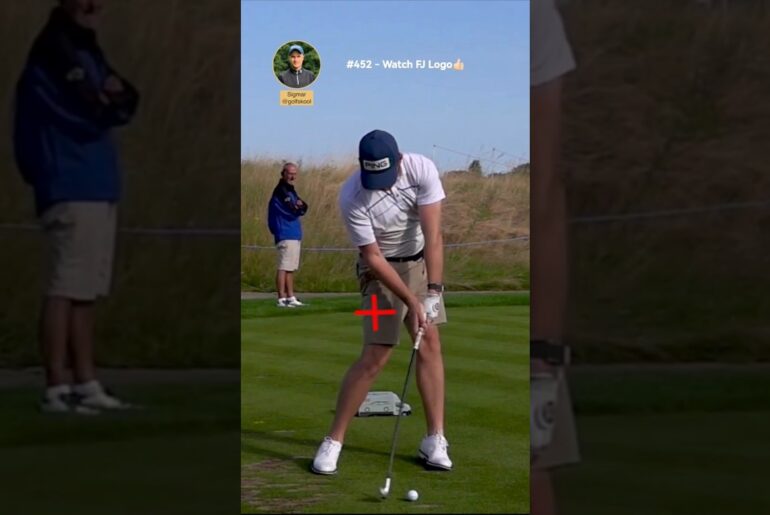
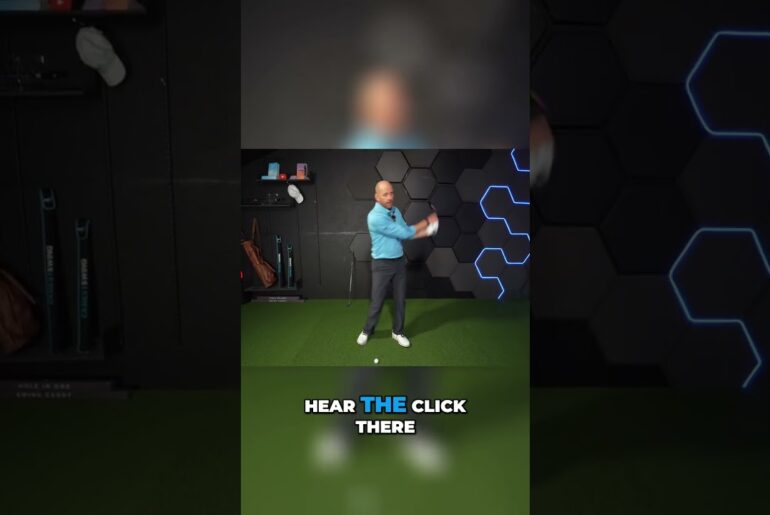
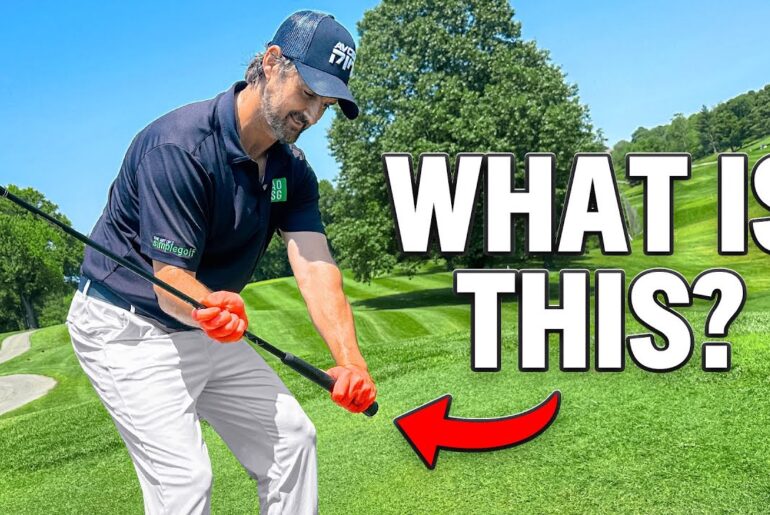
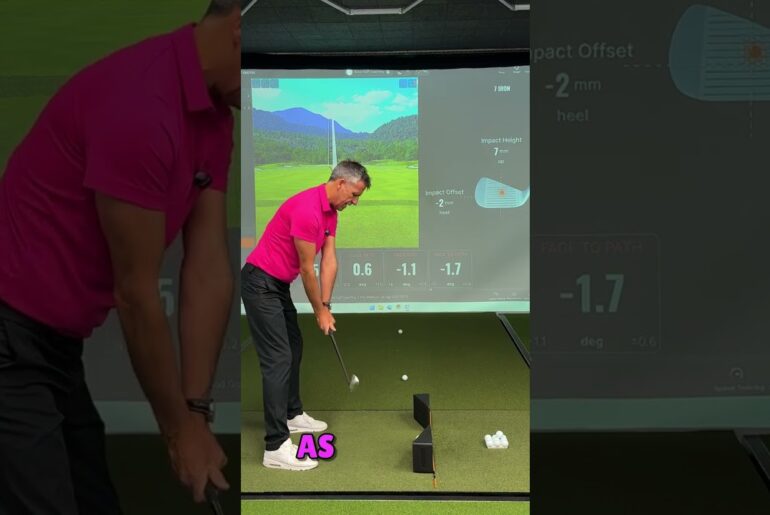
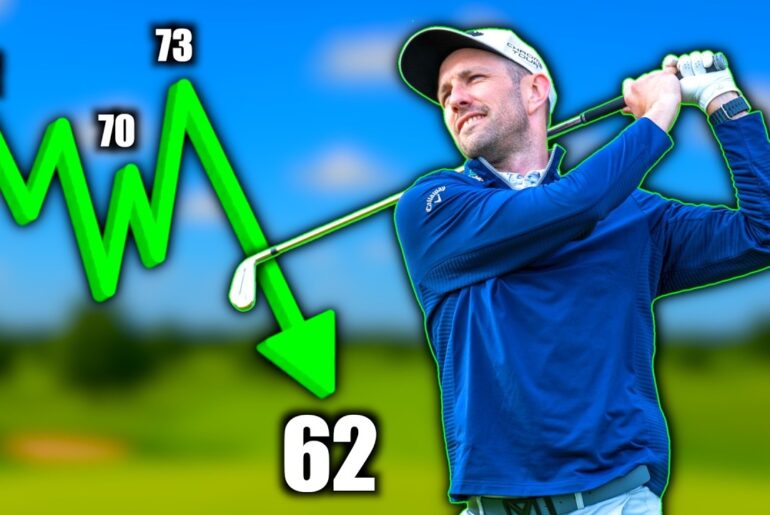
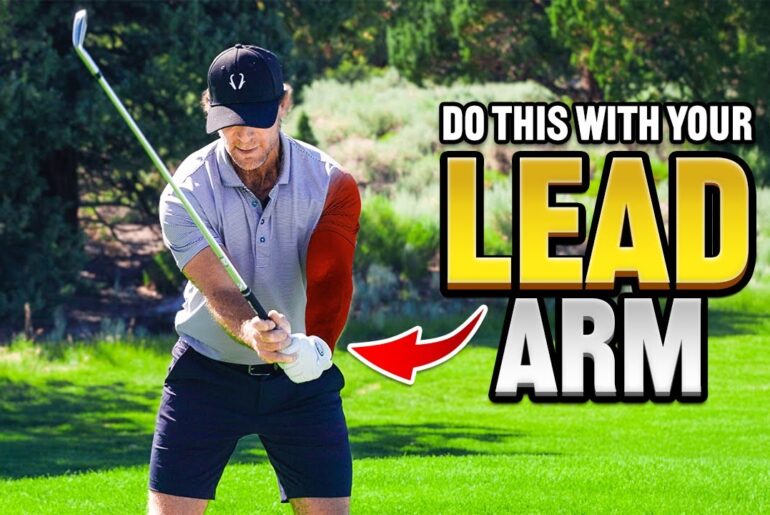
13 Comments
Thanks Rob, good reminder to frequently check setup so bad habits don’t creep in. Did you attach the I range Sports link?
Brilliant Rob. Thanks!
Your teaching is the absolute best. You do such a good job of explaining your techniques. You have really improved my ball striking. I still have a ways to go as old habits die hard but I am slowly improving thanks to your lessons.
Rob,
Well, I think the simple tip and idea might’ve just solved my early extension problem I’ve had for the past several years!
Thanks so much for the great content you provide to everyone as I can’t see how anybody doesn’t benefit from your great instruction!😊
Interesting that you used a clip of Nicklaus. I believe one of Jack’s tips was to turn one’s head slightly to the right at address, to allow the shoulders to turn easier. This would not be necessary if your chin is up. So, completely consistent. Good stuff.
Thank you, Rob!
By far the best tip i've heard and seen since a long time. And i heard and saw al lot.
I’ll try ANYTHING!
Being that the driver is longer, what kind of drill or check points should I use for that club. The visual of your cap covering your face is amazing.. I am going to record my swing to see if my head is to high.
Amazing teacher!
Mac O’Grady came up with this in the 80s, the eyeline. Give him some dues, you know this fact,
Thanks for giving useful tips that newer golfers can use without placing the body in awkward positions. For me, the wall drill is hard trying to use a club, so I wear a cap with a binder clip at the visor center and 1 of the clip's wire arms (thingy, LOL) pointing down. I can check if my head is rising up or moving forward before impact and down at follow through by looking at the wire arm.
What a valuable piece of advice, easy to implement and never told about. Thanks Rob, your work stands out.